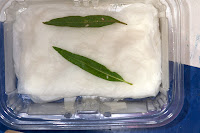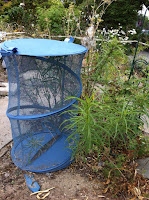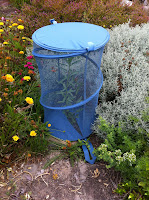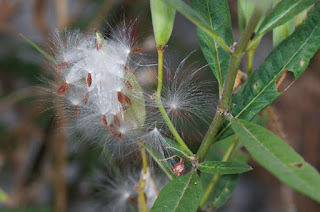What you see here are wasps. People tend to be afraid of wasps because, like bees, they can sting. With both bees and wasps, there are some species that are very peaceful, and some species that are very aggressive.
These wasps are called "paper wasps" because they create their nest out a paper-like substance. They make this paper by chewing up leaves and gnawing fiber from wood.
This particular species of paper wasp (
Polistes fuscatus) is normally not aggressive towards people or other animals. In fact, the adults are vegetarians that live on fruit and nectar from flowers. They, like bees, are "pollinators," meaning that they gather pollen from flowers and help plants to produce fruit. So you might think that they'd be good to have around your garden.
However, for Archie and other monarch butterflies, these wasps are a big problem. When the wasps reproduce, they hunt caterpillars, crickets, grasshoppers, and locusts to feed to their larva. Monarch butterfly caterpillars, unfortunately, have no defense against these wasps.
A nest like the one in these pictures can kill large numbers of monarch caterpillars. For this reason, people who try to help the monarch butterflies will sometimes destroy wasp nests. You might think this is a bad idea -- after all, both paper wasps and monarch butterflies are native species, they have coexisted for thousands and thousands of years, and the wasps serve important functions in the ecosystem. There is some justification for reducing the number of wasps, however. Because people have changed the environment where these insects live, we have shifted the balance between the two species. Wasps can flourish in areas where people live: the exposed wood from houses and other structures provide them with easily used material for building nests (and places to build them), and gardens provide abundant fruit and flowers for the wasps to feed on. Unfortunately, people have had the opposite effect on the environment needed by monarch butterflies -- open fields have been turned into farms or cities, and there is less of the milkweed plant that the butterflies need to survive.
It is a risky thing to try to manipulate the balance of nature, because so many things are connected in ways that we don't always understand. By living where we do, we are already interfering with the natural equilibrium.
For what it's worth, in Archie's Garden we're working on making it difficult for the wasps to get to the caterpillars. We'll be building a screened-in area where we can move milkweed plants.




















































